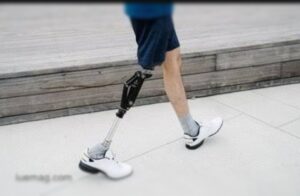
In 2025, the line between human biology and technology is blurrier than ever—and that’s a good thing.
From AI-powered diagnostics to brain-computer interfaces, we’re entering a new age where technology isn’t just helping us live longer—it’s helping us live better. This transformation is driven by two powerful forces: digital health innovation and human augmentation.

Let’s explore how this tech revolution is redefining what it means to be human.
The Rise of Digital Health
Healthcare is no longer confined to hospitals or doctor’s offices. Thanks to rapid advances in digital technology, healthcare is now everywhere—and personal.
Here’s what’s fueling the digital health boom:
1. Smart Wearables
Smartwatches, fitness trackers, and even smart rings have become medical-grade devices. In 2025, these wearables do more than count steps—they:
Track heart rhythm, oxygen levels, and sleep quality
Detect early signs of illness (like atrial fibrillation or respiratory issues)
Alert users and doctors in real-time
Companies like Apple, Fitbit, and Oura are now playing a major role in preventative care.
2. AI-Driven Diagnostics
Artificial intelligence is revolutionizing diagnostics by:
Reading X-rays, MRIs, and pathology slides faster and more accurately than humans
Analyzing symptoms through apps and chatbots
Predicting potential health risks based on genetic data
Doctors are still essential—but now they’re backed by a second brain that never sleeps.
3. Telemedicine 2.0
What started as video calls during the pandemic has evolved. In 2025, telemedicine includes:
Real-time monitoring via remote sensors
Virtual consultations with AI co-pilots
Instant prescriptions and treatment plans
Digital health isn’t a trend—it’s the new norm.
Human Augmentation: Enhancing Human Potential
If digital health focuses on healing and prevention, human augmentation is about enhancement. It’s where biology meets engineering in the boldest way possible.
1. Neurotechnology & Brain-Machine Interfaces
Imagine controlling a computer just by thinking. That’s not sci-fi anymore.
Startups like Neuralink and Synchron are working on brain-computer interfaces (BCIs) that allow:
People with paralysis to communicate and move prosthetic limbs
Direct control of digital devices through neural signals
Potential treatment for neurological disorders like Parkinson’s and epilepsy
In the future, BCIs could even boost memory or enable brain-to-brain communication.
2. Next-Gen Prosthetics
Forget clunky artificial limbs. Today’s prosthetics:
Are controlled via muscle signals or brain input
Provide sensory feedback (so users feel touch and pressure)
Learn and adapt to user behavior with embedded AI
We’re not just restoring lost abilities—we’re creating new ones.
3. Genetic and Biological Augmentation
Thanks to breakthroughs in CRISPR and genomics, 2025 is seeing early-stage interventions that:
Correct inherited diseases at the genetic level
Improve resistance to certain viruses
Open the door to customized biology
While still highly regulated, gene editing is on the path from science fiction to clinical reality.
Ethical Questions in a Bio-Digital World
As with any powerful technology, human augmentation raises deep ethical questions:
Should we enhance healthy individuals?
Who gets access to these technologies—and who’s left behind?
How do we protect personal health data in a hyper-connected world?
These are not theoretical debates—they’re happening right now, as governments and tech companies work to set boundaries in a rapidly advancing space.
Conclusion: The Age of the Augmented Human Has Arrived
In 2025, health and human augmentation aren’t just about fixing what’s broken. They’re about expanding human potential, pushing the limits of what our bodies and minds can do.
From smartwatches that save lives to brain implants that restore speech, the future of health is intelligent, wearable, and deeply personal.
And we’re only just beginning to discover what it means to be human in a world of machines.
